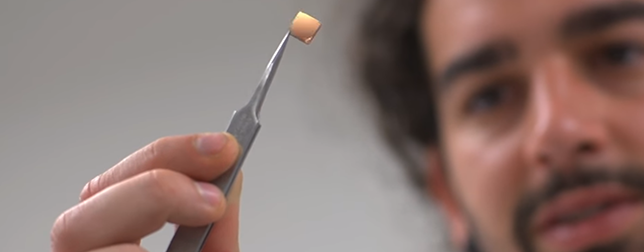Australian National University (ANU) researchers have created tiny optical sensors that open the door to developing wearable medical devices that allow doctors to diagnose people’s health in real time.
The sensors are 50 times thinner than a human hair, and are intended to allow doctors and patients manage various chronic diseases like diabetes.
“These ultra-small sensors could be integrated into a watch to literally provide a window on our health,” said Associate Prof. Dr Antonio Tricoli, leader of the Nanotechnology Research Laboratory at the ANU Research School of Engineering.
Read more This Tiny Tooth Sensor Could Track Your Diet and Health
“This exciting invention shows that we are on the cusp of designing the next generation of wearable devices that will help people to stay well for longer and lead better lives.”
The sensors are able to measure very small concentrations of gases called metabolites, which are discharged through breath and skin, helping to monitor people’s health.
Dr. Tricoli said these biomarkers of disease could be tracked by simply using a pulse of light, and it doesn’t require batteries, wires or expensive lab equipment. He believes a wearable device using these tiny sensors may one day eliminate the need for blood tests and other invasive procedures.
The new sensors are better than other types being developed for wearable medical devices because they could detect metabolites in much smaller accumulations and work at room temperature, according to Zelio Fusco, a PhD scholar in Dr Tricoli’s lab.
“The beauty of our sensors is that they are super versatile and can be integrated into different technologies for applications ranging from medical diagnosis, farming and space exploration,” said Mr Fusco.
“Our sensors could be developed to detect whether a plant has a particular disease or a fruit is ripe, for example.”
Read more Are Sensors Going to Revolutionize Healthcare?
Co-researcher Dr Mohsen Rahmani said what helps these sensors detect gas molecules at very low concentrations are their unique properties created in combination of very small gold nanostructures with semiconductors.
“As the sensors are ultra-small and ultra-light, they could potentially be fitted to micro-satellites or tiny spacecraft that could help in the hunt for life on distant planets, by telling us if there are trace organic molecules of living organisms on distant planets,” said Dr Rahmani, who’s also an Australian Research Council (ARC) Discovery Early Career Research Fellow at the ANU Research School of Physics and Engineering.













